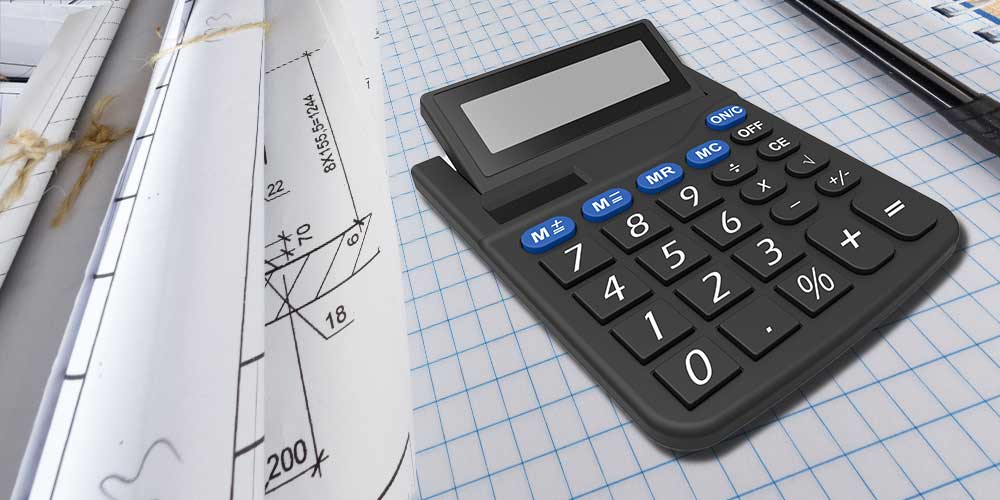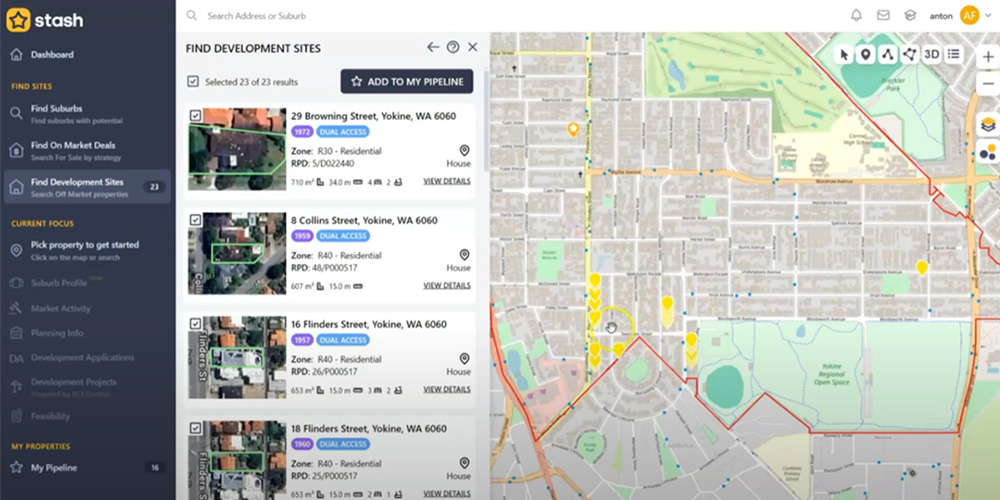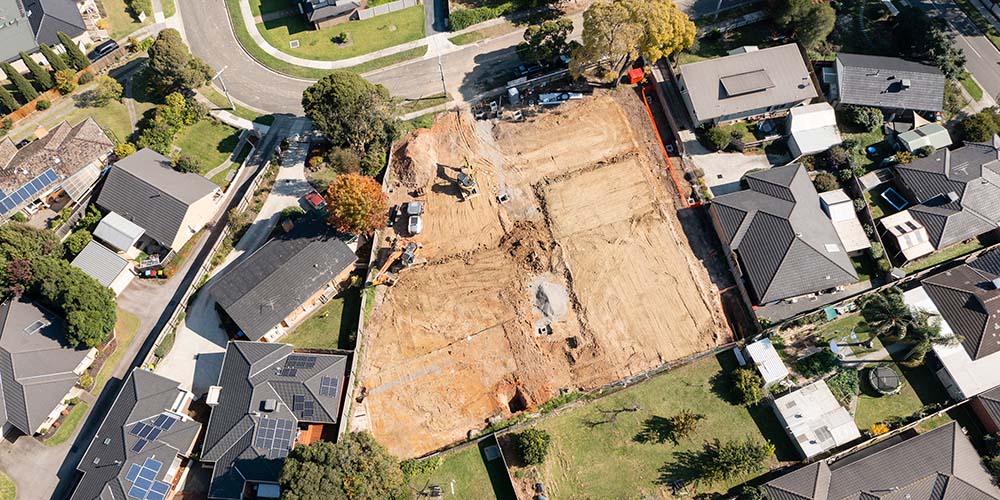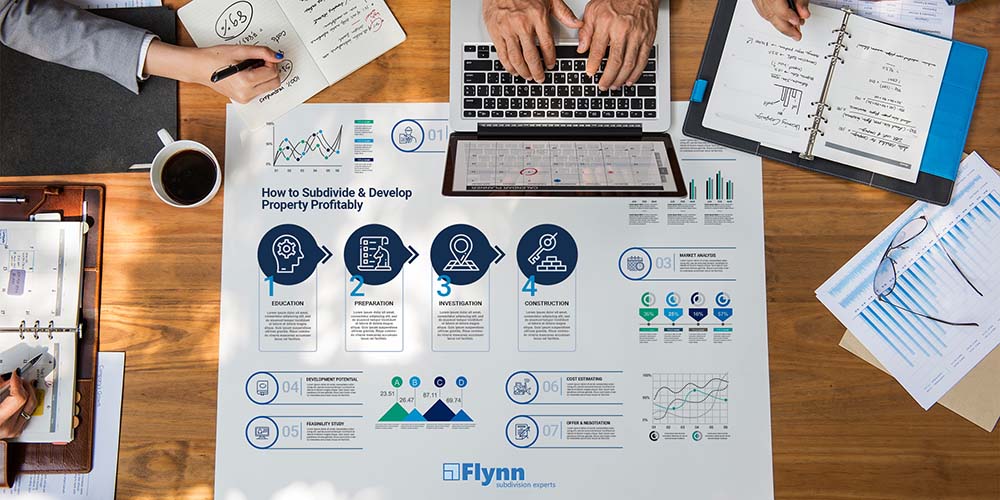
The Subdivision Cost Calculator: Is my Project Worth It?
Do you know how accurately calculate subdivision costs and your projects viably? Do you know what residual land value is? You need to become an expert subdivision cost calculator to ensure your developments are profitable, and that means understanding how to compile and assess revenue, cost and profit data. This article will educate you on these topics, to remove some of the uncertainty around costs and determining project viably. The development of land has inherent risks, like any business or investment strategy, so it is important to get a good grasp of costs early on and know how to analyse the data properly.
The golden question everyone should ask – is my subdivision going to be profitable? Most people however get fixed on the wrong question. The question they ask is “ what does it cost?”. From a development feasibility perspective, this captures only one third of the data you need to consider when subdividing land in WA. Unfortunately most people spend very little effort or time on investigating subdivision feasibility before they dive headlong into a project, working out the details as they go along and putting optimistic or poorly researched figures against costs and revenues. Investing some decent money and time into feasibility to research the viability of a project that has land costs of say $600 000 with added land development and building costs of another $600 000-$700 000 (total project capital value in excess of 1 million dollars) is far from unreasonable, it is actually essential.
People never invest on a whim with other expensive purchases they make in their lives- they research their holidays for months before they book them, test drive and inspect many vehicles before buying the correct one, and get building, pest and structural inspections on several houses before investing in a residence. The same attitude needs to be adopted towards investigating the feasibility of subdividing land in WA and committing to development. In this article, we will discuss the fundamentals of a subdivision cost calculator to help you determine the viability of project that you should run some numbers through before you purchase an investment. There is no such thing as a good area or a bad area to buy- there are projects everywhere, they key is that the dollars need to stack up, and that you need to look for savings in the right places.
Subdivision Cost Calculator Input Data
Project feasibility starts with a very simple financial formula, with three inputs to be considered.
The formula is: P = R – C
Where P is Profit, R is Revenue, and C is Cost.
Lets look at the elements in a little more detail from a subdivision and development perspective.
Profit (P)
Profit is the residual amount once subdivision costs are taken away from project revenue. Dependent on the project risk, investor expectations and market conditions, a project should have a return on investment (ROI) of 20-30%. In the current market, 15-20% is not uncommon and should be considered. Projects less than this should not be considered- under 15% leaves little margin for error, changes in the market and tax. For example, a drop in property values over the course of the project (say 12 months WITH 10% ROI) and a few cost variations to the build price or land development could easily change a 10 % ROI down to 5-6%, before tax on profits. For the risk involved and the size of the investment over a twelve-month period, this is not a worthwhile investment. You must consider the opportunity cost of investing your dollars elsewhere. If the project had an ROI of say 17% however and dropped to 12% , the outcome wouldn’t be the best but it would still be ok- there is room for error and change in the market with this sort of ROI.
Step one is consider what sort of ROI you are happy with- the revenue figure (R) minus project cost (C) as a percentage of total cost will give you the percentage available. The easiest place you can increase this margin if it is initially unfavourable is by reducing project costs. In order of saving capability, these costs are:
- What you pay for the land in the first place
- The cost of physical land development/building
- The cost of finance
As we can appreciate however, without doing this subdivision cost calculator exercise and some feasibility research it is impossible to determine the residual value of the land (which is what you should pay to achieve your preferred ROI- asking price less what amount is needed to effect a good ROI).
The cost of doing physical work (Development costs and building) is fairly fixed and the hardest place to effect savings without compromise on quality. It is unfortunately the first place many people look to find savings to increase ROI. The better place to effect savings is by not paying too much for the land in the firs place. To become a savvy investor and developer, you need to be paying residual value only.
Development Revenue (R)
Your revenue figure is a forecast of what your end product will sell for on project completion, based on the current market and growth trends. Estimates in the current market should be conservative and allow room for rise or fall. For example, if you are producing three 3×2 townhouses on 350m2 blocks in your project and they will sell for $500,000 each according to your research, you forecast revenue (R) is $1.5 million. Your research can include consultation with local real estate agents, licensed valuers and project marketing consultants. Agents tend to be optimistic; valuers conservative- a figure somewhere between their estimates is a good start point for your forecast revenue. You can also do your own research using Tools like REIWA, RP data and Real estate .com. AN important piece of data to consider in you =r research is also to look at the time taken to sell and the volume of comparable sales in the area- if there are 100 similar properties in the area that have all been for sale for 300 plus days you either need to factor this into your holding costs or consider a project in another area- there is oversupply in the area.
Subdivision Costs (C)
Costs for your subdivision or land development project are the following, and all must be considered in your subdivision cost calculator. Subdivision Costs include:
- Surveying, engineering and Project management fees
- Land development costs (demolition, retaining, fencing, site works, drainage etc,
- Dwelling build costs (if building)
- Local government and WAPC fees and charges
- Utility co-contributions and costs (western power, watercorp etc. Useful cost to subdivide land article on utility costs on this page )
- Holding costs and council rates
- Interest on loans and mortgages
- Stamp duty and taxes
- Sales agent fees
- Marketing costs
- Parent lot acquisition cost (Residual value)
When determining subdivision costs in the subdivision cost calculator, determine the parent lot acquisition cost last. If you assemble all other costs first, deduct it form your forecast revenue (R) , you will then have your forecast profit (P). If this amount as a percentage meets your ROI you can pay the asking price for the land. If it doesn’t, deduct the dollar figure shortfall from the asking price and offer this as the Residual Value to make the project viable.
Want help to calculate your subdivision costs and determine your projects viability with accuracy and certainty?
Our professional subdivision feasibility studies and site investigation services facilitate your ability to make profitable, educated investment decisions before committing to a property development project.
There are also two entire chapters and modules on subdivision costs, feasibility considerations, calculating residual value and how to do feasibility studies, including templates and a walkthrough video tutorial, in our 225 page Infill Property Developer Guide-book and correlating Online Course. Get started today, learn how to make intelligent investment decisions and remove the guess work!




